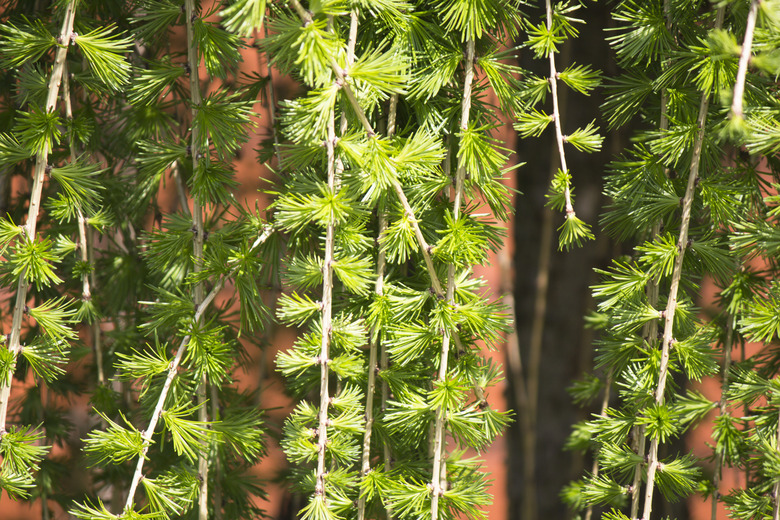How To Care For A Weeping Larch
We may receive a commission on purchases made from links.
Weeping larch (Larix decidua 'Pendula') is a moderately fast-growing European larch cultivar that grows to a modest height of 10 to 12 feet, boasting long, weeping branches. Unusual for a conifer, the weeping larch is deciduous instead of an evergreen tree, dropping its needles in the fall. Weeping larch requires cool, moist conditions to thrive and regular pruning to maintain its weeping habit.
Choose a Sunny Site
Choose a Sunny Site
A native of Central and Southern Europe, weeping larch does best in areas with cool summers and cold winters, suffering in humid conditions. The ideal location for the tree is in U.S. Department of Agriculture plant hardiness zones 2 to 6. The tree will tolerate light shade, though full sunlight is optimal. The tree won't grow in full shade and does poorly in heavily polluted urban conditions.
Maintain Soil Moisture
Maintain Soil Moisture
A very wet, gravelly soil is ideal for this tree, which doesn't tolerate drought. Water at least once a week during dry periods to keep the soil moist. Maintain soil moisture and prevent competitive weeds by mulching the tree with 3 to 4 inches of an organic material such as wood chips, shredded bark, well-rotted manure, or seasoned compost. Keep the mulch several inches away from the trunk and extend it until just past the tree canopy.
Fertilize With Nitrogen
Fertilize With Nitrogen
Every two to four years, fertilize the tree in mid-spring with a 10-8-6 fertilizer. Use 2 to 4 pounds of actual nitrogen per 1,000 square feet, the 10 on the label referring to the percentage of nitrogen in the bag.
Water the soil well before fertilizing, and use a metal rod or narrow trowel to dig 8- to 12-inch deep holes, about 2 inches wide, in a circle around the tree. Keep the holes at least 1 1/2 to 3 feet away from the trunk. Apply even amounts of fertilizer into each hole. You don't need to fill the holes in afterward.
Prune to Maintain Shape
Prune to Maintain Shape
To create an attractive weeping habit, stake the main branch, or leader, and prune regularly during the tree's dormancy. Aim to create an umbrella-like shape by pruning off branches that grow straight down and branches that grow straight up. Prune to buds that face up or outward, rather than down to the ground.
If you don't desire a classic weeping shape, you can leave the tree to its own devices. Without staking, the tree will act as a ground cover. Wipe pruning tools with rubbing alcohol after use so they don't spread disease.
Check for Problems
Check for Problems
Brown or black spots, streaks, or lesions on the needles and stems may be a sign of needle cast fungi. Moist, humid conditions favor this pathogen, so maintain air circulation by removing plants or weeds that crowd around the tree.
Pests such as aphid insects and sawflies may cause feeding damage on foliage. Control these pests by mixing 2.5 ounces of insecticidal soap per gallon of water in a garden sprayer and applying evenly to the canopy. Protect yourself by wearing rubber gloves, long pants, and long sleeves. Store unused solution away from children and pets.
